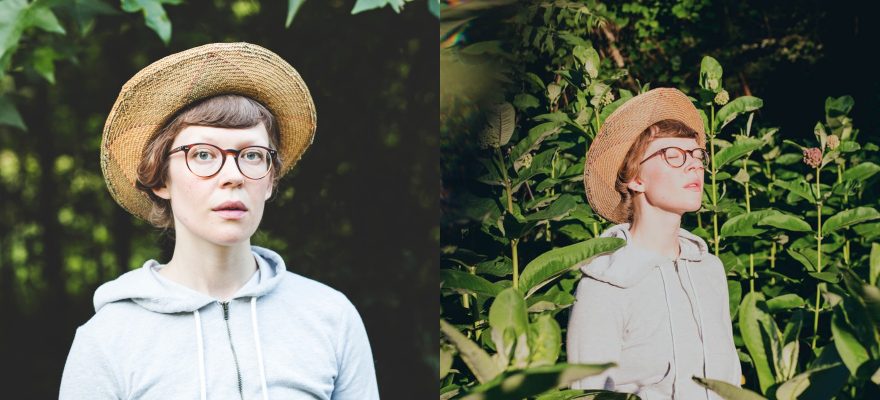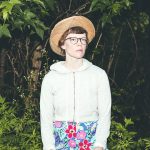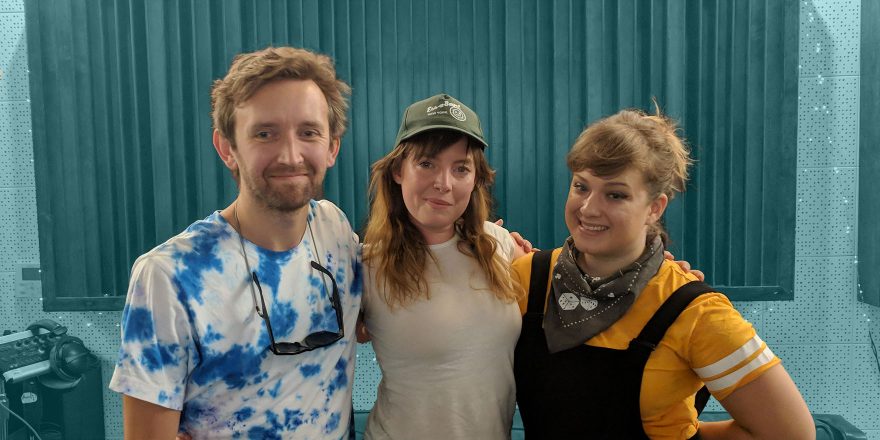Dawnbreaker is the first album Alexandra Sauser-Monnig — also of Mountain Man — has released under the name Daughter of Swords. To celebrate its release (it’s out today via Nonesuch Records) Sauser-Monnig broke the album down for us track-by-track.
— Annie Fell, Talkhouse Associate Editor
“Fellows”
The guitar line of “Fellows” materialized while I was living in a beautiful, ramshackle old farmhouse in rural Virginia with a former partner, and the words later while camping high up a California mountain road on a break from touring with Feist many years ago. The writing of the song spanned the end of one relationship and the beginning of another, and it reflects on the futility of defining yourself through your relationship to a partner.
“Gem”
“Gem” was the first song that Nick Sanborn — who engineered, co-produced, mixed and played on the record — and I collaborated on arranging. He’s really good at following what’s fun, and pivoting to another song or idea or approach when the joy or the energy feels like it’s beginning to lag. After having recorded a couple of pretty spare demos and takes, this song ventured into new terrain and was the first time the breadth of the spectrum of sound and arrangement of the record became clear.
“Shining Woman”
I wrote this song when I was feeling wrapped up about what being an adult person with a womb means. Writing it felt like a reminder to myself that the world is full of inspiring people choosing to make their own paths through life liberated from the cultural and biological script. The main character of the song took up residence in my mind and served as a reminder to me that change is always possible.
“Fields of Gold”
Drummer Joe Westerlund, formerly of Megafaun and currently of Mandolin Orange, played a large role in shaping the feel of “Fields of Gold.” He is a wizard of aux percussion and has a library of things to make sounds with, from shakers and bells to custom made metal sculptures that you play with a bow to things nature made that happen to sound beautiful. He lived next door to the studio where Dawnbreaker was made, and for a couple of magical days made complicated, delicate percussive arrangements holding more percussion in his hands than seemed humanly possible before I saw him in action.
“Grasses”
“Grasses” is a meditation on acceptance. I wrote the words when I was sick with tick-borne illness. My body felt really wrong and I was having trouble getting any insight or advice, or even a diagnosis from doctors. So all I knew was that I felt terrible and that it wasn’t getting better. I sang “Grasses” to myself while lying in bed in an effort to comfort myself and to get down from the high ledges of fear and panic I was on in my mind.
“Easy is Hard”
Country was the first kind of music that made me feel something potent that I couldn’t name. It’s often where my songwriting begins, even if it doesn’t stay there. “Easy is Hard” follows its own logic, but feels like one of the songs on the record whose roots are most obviously in country.
“Rising Sun”
For a while I had an old worn out Sun Records tape of Billy Lee Riley songs in my car. I was in a very transitional phase of life and latched onto this tape and listened to it all the time in a way that gave me the tiniest sense of stability. I learned a blues shuffle off of it and wrote a different version of the song, which is “Rising Sun.” One of my favorite moments on the record is the end of this song — as the band fades out, the voices of Mountain Man fade in, humming like the highway and ending with all our voices and the sound of the room predominant in an unexpected way.
“Long Leaf Pine”
I had just moved to North Carolina and had been out blackberry picking and exploring the woods behind my house when I wrote “Long Leaf Pine.” I came back in and sat down and the song came out more or less complete. Recording it was equally magical — Nick Sanborn and I had been trying different arrangements of the song, and had started over again, making some kind of far out choices. It had started snowing outside when Amelia Meath and Molly Sarlé came over. They sang beautiful witchy harmonies while snow was falling outside the window and contextualized everything else beautifully within the realm of harmony.
“Human”
This was another song that appeared mostly formed very fast. I’ve had the possibly common but definitely surreal experience a few times of my subconscious delivering up verdicts on my life choices in song form before the rest of my mind is ready to acknowledge whatever it is, and that was the case with Human. We recorded the song, and then I left it alone for almost a year without even listening to it. There was a point that I didn’t want it on the record because it’s so raw. But now its presence feels crucial to me in the arc of the record.
“Dawnbreaker”
“Dawnbreaker” is a dive into the ways imagining possible transmogrification into a different life form sometimes feels preferable to facing the hard emotional truths of life with a human consciousness. This last track on the record was one of the first takes that we recorded, and it was recorded as a demo. For a while, I wanted to get a different take to use, but none of the subsequent takes had the same rawness and tentative energy that ultimately felt so right as a note to end on.
(Photo Credit: Kendall Bailey Atwater)







